Origins of the Zercher Squat
At first glance, the Zercher squat seems like any other exercise you would do to strengthen your lower body. But upon closer inspection, you notice one significant difference: Unlike most squat variations where the weight rests on your body, you have to actively hold onto the barbell as you do a Zercher squat.
The exercise got its name from a 1930s strongman named Ed Zercher, who invented it. According to stories, Zercher’s home gym had all sorts of junkyard items, including old wrecking balls and anvils. One could only imagine how many exercises he came up with before thinking of his very own squat variation.
Despite its odd appearance, the Zercher squat is a good exercise because it strengthens your lower body, engages your core, and works your entire back more. Plus, since the barbell is resting on your arms, your shoulders, biceps, and triceps work extra hard to support the weight. As an added bro bonus, squeezing your arms to hold the barbell makes them look even bigger.
How to do a Zercher Squat
- Position the barbell at roughly belly button height.
- Walk up to the bar, press the crease of your elbows against it, and bend your arms to envelop and press it against your stomach. You can also interlace your fingers to create a more secure shelf for the barbell.
- Take a couple of steps back, bring your chest out, and direct your gaze forward.
- Take a deep breath and squat by imagining that you’re sitting down in an invisible chair. Your back should remain neutral throughout the squat, and your torso should be upright.
- Go down as comfortably as you can and then push through your heels to squat to the top position as you exhale.
- Take another breath and repeat.
What muscles do the Zercher squats work?
Like all squat variations, Zercher squats primarily train the quadriceps – the large muscles on the front of the thigh (1). The quadriceps extend and stabilize our knees, and one of the four heads (rectus femoris) flexes the hip (2). Zercher squats also force the knee to travel forward, which places the quadriceps at a better mechanical advantage.
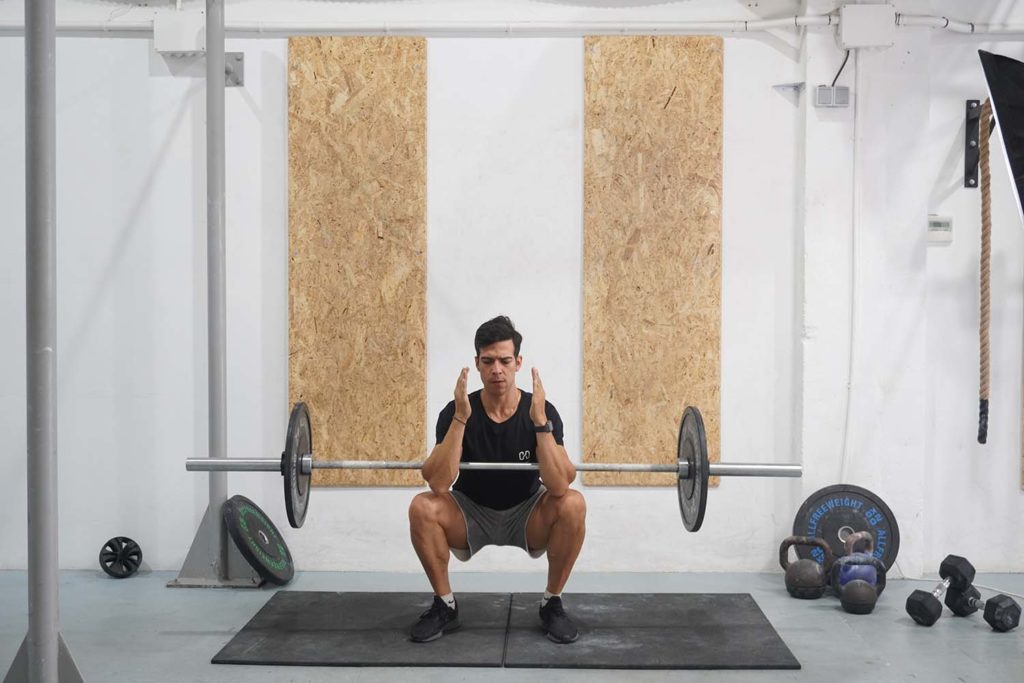
Zerchers squats have an excellent potential for training the gluteus maximus. Since the muscle group plays a massive role in hip extension, deep Zercher squats develop the glutes.
Similarly, Zercher squats activate our hamstrings. But like most squat variations, our hamstrings don’t work as hard, which is why you should do hip hinge exercises and hamstring curls for balanced leg development.
Unlike certain squat variations, Zercher squats involve our core and upper back muscles much better. Since the movement requires a more upright torso, these muscles have to work extra hard to keep us in position and balanced. Specifically, Zercher squats work your abs, transverse abdominis, erector spinae, rhomboids, lats, and trapezius. Finally, the exercise also involves our shoulder and arm muscles since they all play a role in supporting the weight on our forearms as we squat.
3 Tips for Proper Form
1. Start with an Empty Barbell
Trainees often try to rush the learning process, which typically means lifting more weight than they can handle. Some exercises are more forgiving, but Zercher squats aren’t. Start with an empty barbell to get a good feel for the movement:
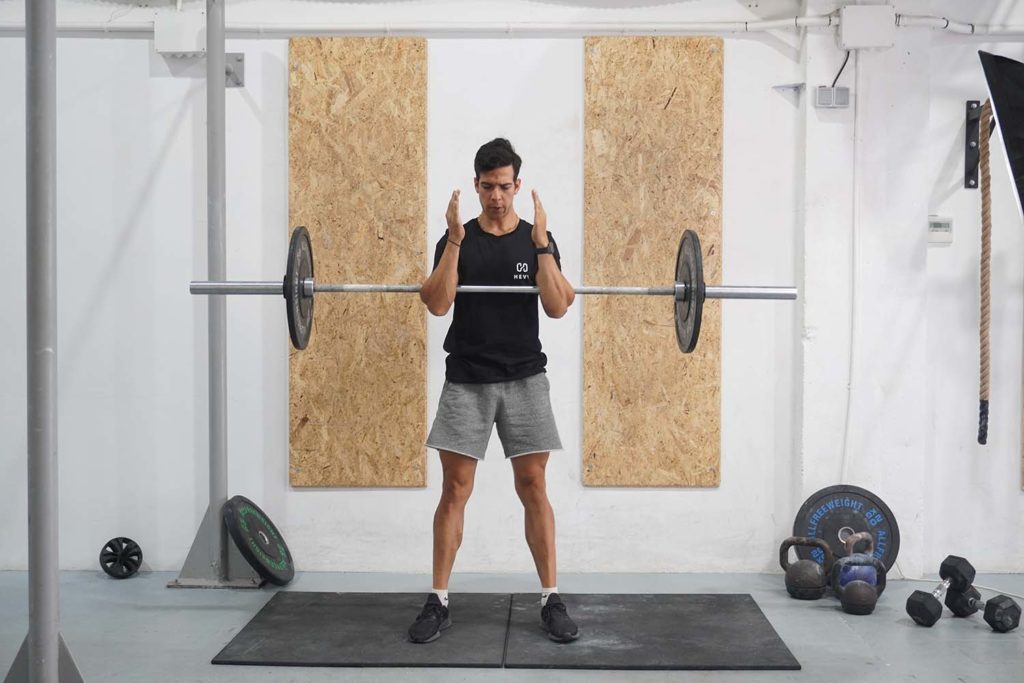
- How difficult it is to maintain balance
- How the barbell feels on your forearms
- How deep you can squat
Get some quality practice with an empty bar before adding extra weight.
2. Resist the Urge to Fall Forward
As you begin to Zercher squat more weight, keep one mental note in mind – Resist the urge to fall forward. Actively bring your torso back and keep your core muscles engaged because losing balance is easier than you might imagine, especially if you don’t have experience with this exercise or similar ones like front or Goblet squats.
3. Wear a Long-Sleeve Shirt
While not technically a form tip, we feel this is important to note, especially for your first few times doing the exercise. Since you’ll be supporting a raw piece of metal on your forearms, it’s not a bad idea to wear long-sleeve shirts to prevent (or, at least, reduce) the bruising and pain.
Variations and Modifications of the Zercher Squat
1. Pause Zercher Squats
The pause Zercher squat is an excellent variation that improves glute activation and builds strength from the bottom. To do these effectively, follow the instructions we’ve shared above but make one small change: Hold the bottom position for two to three seconds instead of squatting down and going back up immediately.
2. Elevated Heel Zercher Squats
The elevated heel Zercher squat is a neat variation where you place a pair of weight plates or something similar underneath your heels. The goal is to raise your heels slightly off the floor, which would allow you to squat a bit deeper, even if you don’t have the best mobility. Alternatively, you can simply Zercher squat in Olympic lifting shoes, which will achieve the same thing.
3. Zercher Carry
The Zercher carry is a fantastic strongman movement that reinforces whole-body strength and stability. These are great because everyone can benefit from doing them, and we recommend them for folks who struggle to remain balanced on heavier Zercher squats.
Mistakes to Avoid
The first mistake you should avoid with this movement is not securing the barbell well before unracking it. Flex your arms and clasp your hands to ensure a sturdy ‘shelf’ for the barbell. Otherwise, you risk dropping the weight mid-set.
Second, resist the urge to bend forward as you squat down. The barbell will try to pull you forward, and it’s your job to maintain an upright torso. Doing so will keep you stable and allow the barbell to remain over your center of gravity.
Third, avoid having your feet too narrow. If your elbows bump into your thighs on the way down and prevent you from squatting lower, you need to spread your feet wider. Ideally, your elbows would travel between your thighs on the way down, allowing for an optimal squat depth.
Finally, avoid making the mistake of taking this exercise lightly. Zercher squats are an advanced strongman/powerlifting movement that requires great focus and stability to perform correctly. Treat the movement with the utmost respect, focus on it entirely, and it will deliver fantastic benefits.
Similar Exercises to the Zercher Squat
Sissy Squat
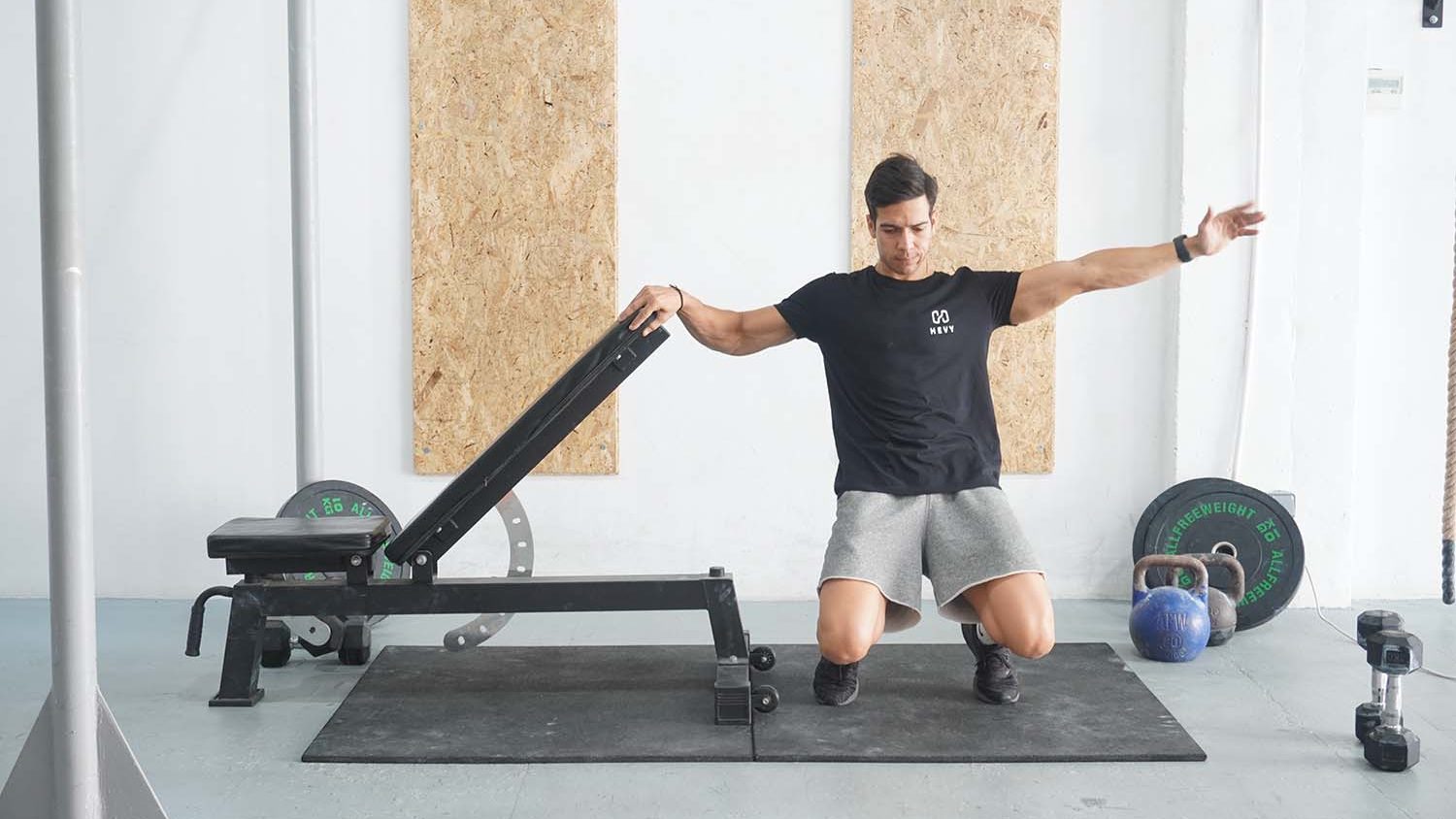
Sissy squats fall into the uncommon exercises category, but they are pretty effective when done correctly. Similar to Zercher squats, the sissy variation emphasizes your quadriceps without having to use much (if any) extra weight. Plus, both movements involve your core and upper back, allowing you to build whole-body strength.
Goblet Squat
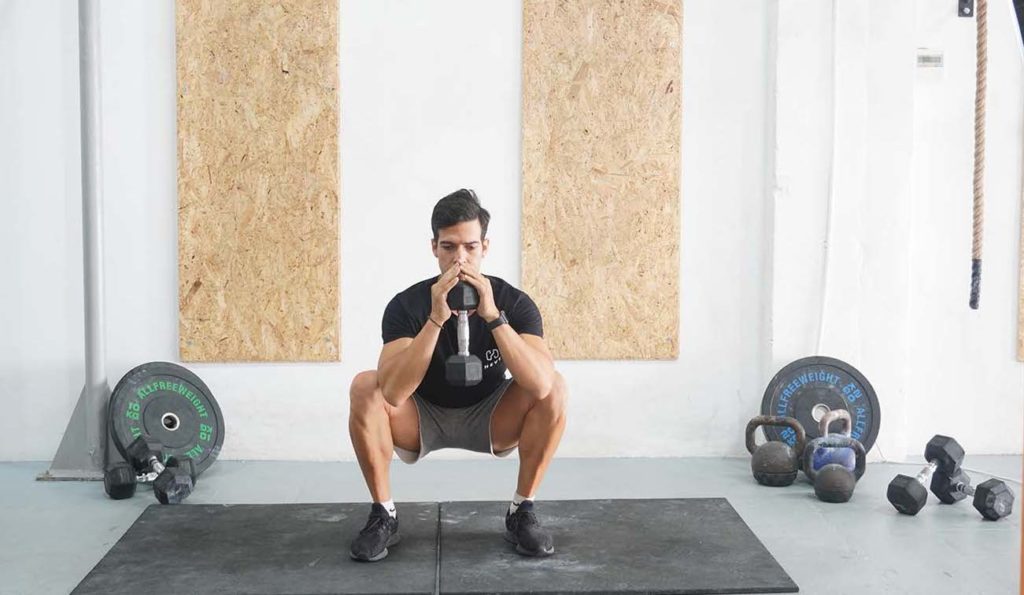
With goblet squats, you have to hold onto a weight (dumbbell or kettlebell) in front of your chest. The movement is quite similar to Zercher squats because you have to maintain a more upright torso. As a result, quadricep engagement improves, and your upper back has to work hard to keep you from falling forward.
Front Squat (Barbell)
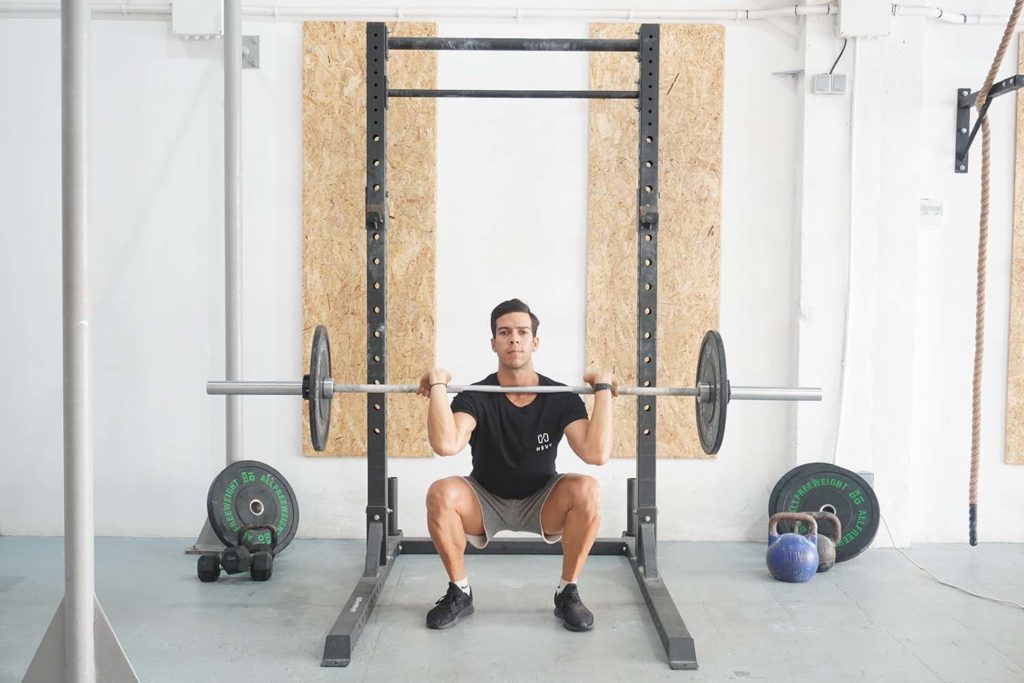
Front barbell squats are similar to Zercher squats because the weight rests in front of your body. Doing so engages your core and upper back muscles, which work hard to keep you upright as you squat. The primary difference is that the weight rests higher on your body (atop your shoulders) with front squats, making it more challenging to stay upright.
